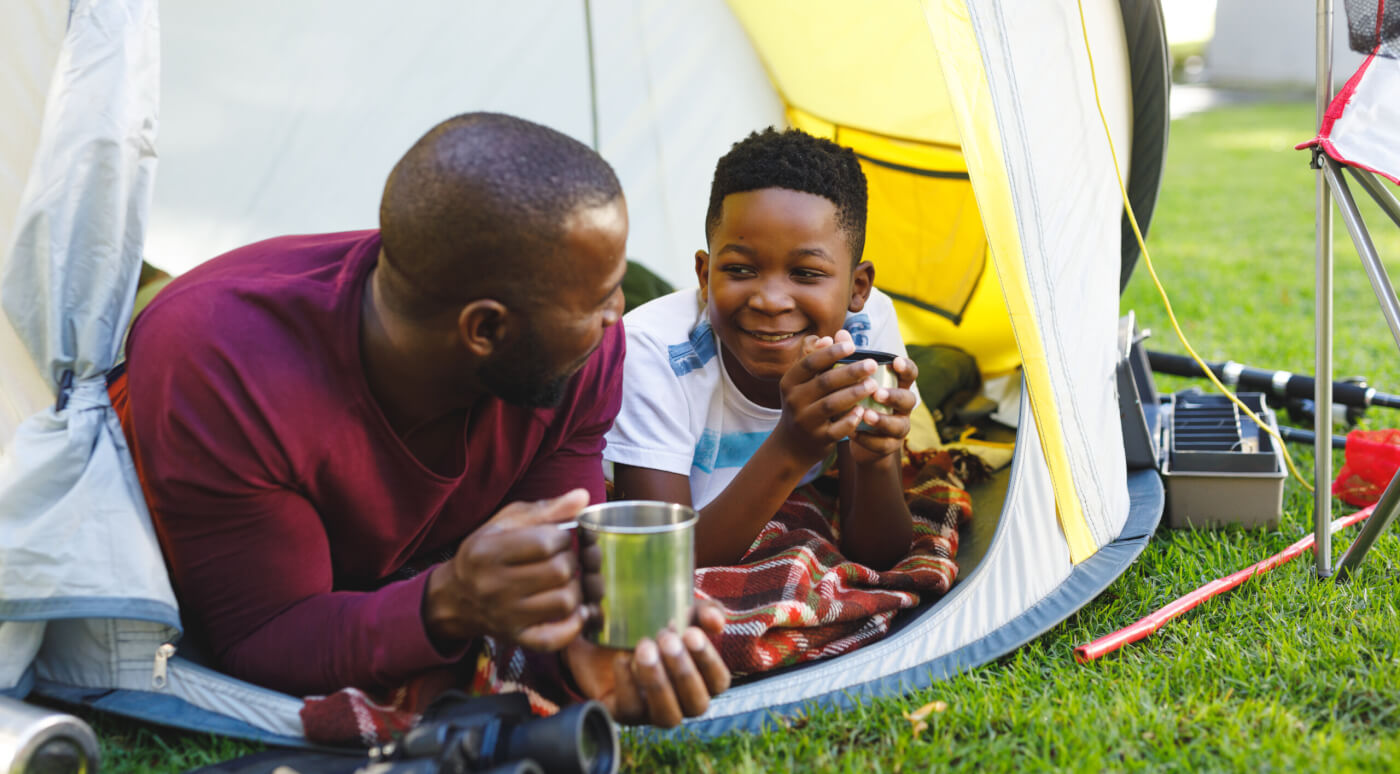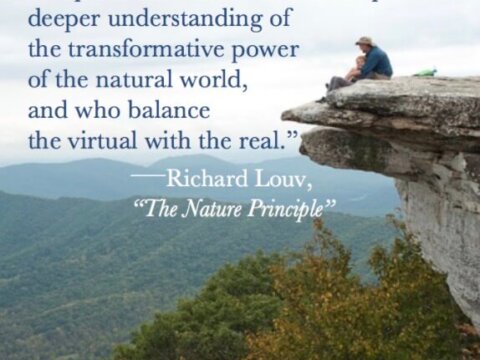Outdoor Participation Trends Report offers insights into how to connect more children with nature
The first night that Melvin Carter took his kids camping was in the back of a rec center in Saint Paul, Minnesota.
His children woke up after spending the night in a tent and immediately asked: “Can we do it again tonight?”
Carter is the first Black mayor of Saint Paul and the camping trip was part of his “unapologetic equity agenda,” which includes finding more ways to bring nature-based programming to Black, Indigenous and People of Color (BIPOC) and low-income families. An example is Saint Paul’s urban camping program, which introduced 200 new people to camping in 2020 alone, with overnight stays in the rec center, city parks and a multi-night canoe and backpacking trip.
This kind of initiative is helping to diversify outdoor participation in places like Saint Paul – and increase interest in the outdoors in general, especially for young children.
The Outdoor Foundation recently released its 2022 Outdoor Participation Trends Report, which shows outdoor participation is growing by many important measures – and highlights how innovative programs like Saint Paul’s urban camping trips are helping to drive numbers up. In 2021, 164.2 million Americans over the age of six, or 54 percent of the population, participated in outdoor recreation at least once, which was the highest number ever recorded.
But, the report also found that outdoor participation is declining by other critical measures – and that many challenges still exist with getting people, diverse communities and children outdoors.
Key findings from this report offer insights into the future of the movement for children and nature – and shed light on what systems-level changes could help connect more children with the benefits of nature.
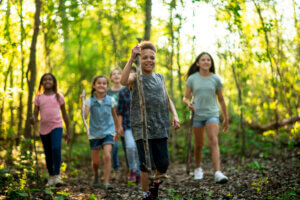
Diversifying the Outdoors – Through Diversifying Opportunities to Get Outside
Outdoor recreation saw a slight increase in race and ethnic diversity, according to the report, but the current outdoor participant base is less diverse than the overall population and significantly less diverse across younger age groups.
And, because the U.S. population is projected to become more diverse in the next 30 years, the percentage of outdoor participants in the overall population could fall by a large margin, unless outdoor participants also become more diverse. Currently, 72 percent of outdoor recreation participants are white.
When city officials in Saint Paul were trying to expand access to outdoor opportunities, they conducted a study to examine the reasons diverse communities weren’t recreating outdoors at the same rate as white groups. They found that some of the most prohibitive barriers included fees, staff representation, type of program offerings and the ways in which programs were promoted.
City leaders started working directly with the communities they wanted to serve, to make sure they were being responsive to their specific needs and interests. They did things like hire more people of color, who know local communities and speak their languages.
The city also worked to make nature more readily, and freely, available to children by incorporating nature into places that children live, work and play, through initiatives like:
- Nature-based programming in local schools, child care centers, and rec centers.
- Nature Smart Libraries, which offer green spaces and resources for exploring nature.
- Nature Smart Backpacks, which are packed with books and activities focused on things like wildlife and trees.
- Story Strolls in local parks, which bring books to life in nature.
- Mobile Camps, which enable hundreds of children to travel to parks to play and explore the outdoors.
- BIPOC-oriented nature clubs and hikes.
“The residents of our city are diverse in every way. If we try to reach folks through just one kind of nature program, we are going to miss a lot of people,” said Asha Shoffner, environmental and outdoor education program coordinator for Saint Paul Parks and Recreation. “By offering a variety of ways to access nature and through different approaches to engagement, we are making the natural world more accessible to more people.”
Many of these initiatives were spearheaded by the interagency citywide initiative Explore Outdoors Saint Paul, which grew out of Saint Paul’s partnership with Cities Connecting Children to Nature (CCCN), a joint national initiative of the National League of Cities and the Children & Nature Network.
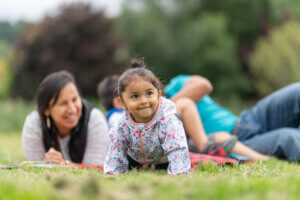
Nearby Nature is a Vital Pathway to Outdoor Participation
People’s introduction to the outdoors often happens close to home, according to the report. The most popular – and most frequented – spots for outdoor recreation are the most accessible and local venues. Neighborhood parks, playgrounds and city parks top the list of where people are going to get their nature fix, the report shows.
CCCN has found that some of the most effective ways for communities to bring nature to children happen through four main pathways, all focused on meeting children where they live, work and play:
- Enhancing parks and public spaces with natural elements such as boulders, logs and paths.
- Adding nature to outdoor spaces at early childhood centers and preschools, as well as to family-, friend-, and neighbor-based child care.
- Incorporating nature-based programming at city facilities, such as libraries and recreation centers.
- Supporting nature preschools, which use outdoor learning strategies to teach content across a wide range of curriculum.
The city of San Francisco, California has been a leader in early childhood nature connection for several years – and has seen the value of creating convenient and accessible opportunities for children to experience nature.
The San Francisco Children & Nature collaborative, within the San Francisco Recreation & Park Department, has implemented a number of similar initiatives to connect more children to nature.
The city has enhanced 45 early childhood care centers and play spaces since 2017, through upgrades like repurposing stumps and logs for play areas, adding natural materials like twigs, rocks, and shells for creative and imaginative play, and installing gardens and native plants for experiencing nature. They’ve also trained hundreds of early childhood educators in nature-based programming and targeted low-income areas.
The group has also distributed 14,900 seed kits to public schools and local families since the start of the pandemic, partnered with the SF Public Library on nature-based programming, and worked with local agencies and nonprofits to install Nature Exploration Areas at public parks, which introduce kids to imagination gardens, stepping stones, and boulders, stumps, and other natural materials for unstructured, innovative play and a place to develop an appreciation for nature. And, they’ve hosted Nature Play Days at local parks, where families and children can observe wildlife, make crafts with nature, read books, touch worms, build dens, and go on nature walks.
SF Children & Nature also grew out of a partnership with CCCN and since 2017, they’ve leveraged nearby nature to connect thousands of children with nature.
“Many child care facilities, particularly those serving low-income children, haven’t had access to the resources needed for really dynamic outdoor spaces,” said Elizabeth Winograd, Senior Program Officer. “Through collaborations and partnerships, we are now able to really change the spaces to make sure that kids can play and learn in nature, even in what used to be a concrete yard.”
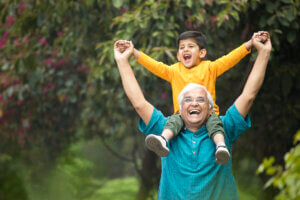
Programs for Multigenerational Groups Can Reach More Children
The report found that a higher proportion of youth are participating in outdoor recreation than ever before, but the frequency of their participation is declining.
But, it also found that households with children have been participating at higher and higher rates for more than five years, and the pandemic only accelerated that trend. The report shows a record level of families participating in outdoor recreation activities. It also found that most adults who are frequent outdoor recreation participants started participating when they were children. This suggests that family-based nature programming could be an effective way to get more children outdoors — and keep them active into adulthood.
Beaver Brook, an environmental education center in southern New Hampshire, wanted to get more families outside together after the pandemic hit. They knew that nature could offer mental, social, physical and family-bonding benefits – to both adults and children.
They conducted a survey to learn more about what forces were keeping families from recreating together, and found that time was one of the most limiting factors. So, they designed programming that wasn’t time-consuming, wouldn’t require much preparation for families to participate, and would provide families with a low-stress way to get out – and be confident doing it.
To do this, they introduced StoryWalks, which feature story pages from a picture book displayed along a hiking trail. The format allows kids to run freely ahead to explore the displays and develop confidence playing outdoors. They found that the programming was a hit, and many families returned with their kids to see new stories as they were posted.
Family programming has also been popular at Barr Lake State Park in Adams County, Colorado where children, parents and grandparents have been flocking to activities like the Bald Eagle Festival, birding programs, outdoor story time, archery, and family canoe and kayak time. This could also be spurred by recent growth in outdoor recreation participants who are age 65 and older. The report found that this age range was the fastest growing age category, with 16.9% growth since the start of the COVID-19 pandemic.
“We’ve definitely seen an increase in kids coming with a parent or grandparent – or both,” said Michelle Seubert, Park Manager at Barr Lake State Park. “I think that kids are wanting to be outside, especially if they spent a lot of time inside during COVID, and we’ve seen an increase in families that want to get their kids to engage in different activities and do more outdoors.”
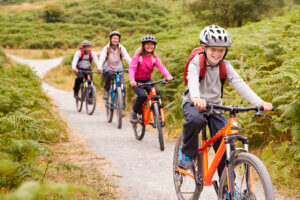
COVID-19 Got More People Outdoors – And They’ve Kept Going Out
Since the COVID-19 pandemic began in March 2020, outdoor participation saw the highest growth ever recorded with the number of new and returning outdoor participants increasing by a rate of 26 percent, according to the report.
It made sense that people flocked to the outdoors as restaurants, movie theaters and shopping centers shut down in 2020, but even after most indoor spaces reopened, the report shows that people kept going outside. The outdoor recreation participant base grew another 2.2 percent in 2021. This sustained growth suggests that the outdoors can spark a lasting interest — a quality that the report’s authors refer to as “sticky,” meaning once someone begins to participate in outdoor activities, they are likely to continue the habit.
The numbers in Colorado support this finding.
“We saw a really large increase after the pandemic hit,” said Travis Duncan, Public Information Supervisor at Colorado Parks & Wildlife. “And, it’s stayed on that upward trend, with visitation numbers to the parks remaining really high.”
The number of visits to state parks in Colorado has grown from 14.8 million in 2019 to 19.7 million in 2021. While 2022 saw a small dip, it was still well above the pre-pandemic numbers with 18.1 visits.
And, Colorado is seeing the greatest participation in its parks close to metro areas, like in the Front Range outside of Boulder, which confirms that nearby nature is an important gateway to outdoor recreation. Nearby green spaces helped introduce people to outdoor recreation when folks were staying closer to home in the early days of the pandemic – and they’ve remained a convenient and popular way for people of all ages to connect with nature.
“People have discovered that you don’t always have to go to the big mountains to experience the outdoors,” said Seubert. “They’ve learned that they can see and be a part of nature anywhere – whether it’s in the Denver Metro area or counting birds in their backyard.”
Access and download the 2022 Outdoor Participation Trends Report
“Minnesota’s capital city brings more people to nature with a focus on innovation, equity and resilience,” Finding Nature News feature about the City of Saint Paul, Minnesota’s journey in recent years to bring nature equitably to its community
“Let the story be your guide,” Finding Nature News guest column by program leaders of Beaver Brook’s StoryWalks program
Cities Connecting Children to Nature San Francisco video
Stories, resources and events related to the impact of the COVID-19 pandemic on nature connection
For an up-close-and-personal experience with the varied nature spaces in Colorado, consider attending the 2023 Inside-Out International Conference, the world’s largest gathering of leaders for the children and nature movement, taking place in the Rocky Mountains of Estes Park, Colorado
-
Network News
POLICY UPDATE: Policy and advocacy for the children and nature movement
-
Voices
Binoculars, bald eagles and my journey as a Black birder
-
Richard Louv
THE WONDER BOWL: Ten Spring and Summer Nature Activities for Kids and Adults
-
Network News
Minneapolis Spotlight: The promise and possibilities of parks for youth
-
Voices
Why nature is my motherhood ally


